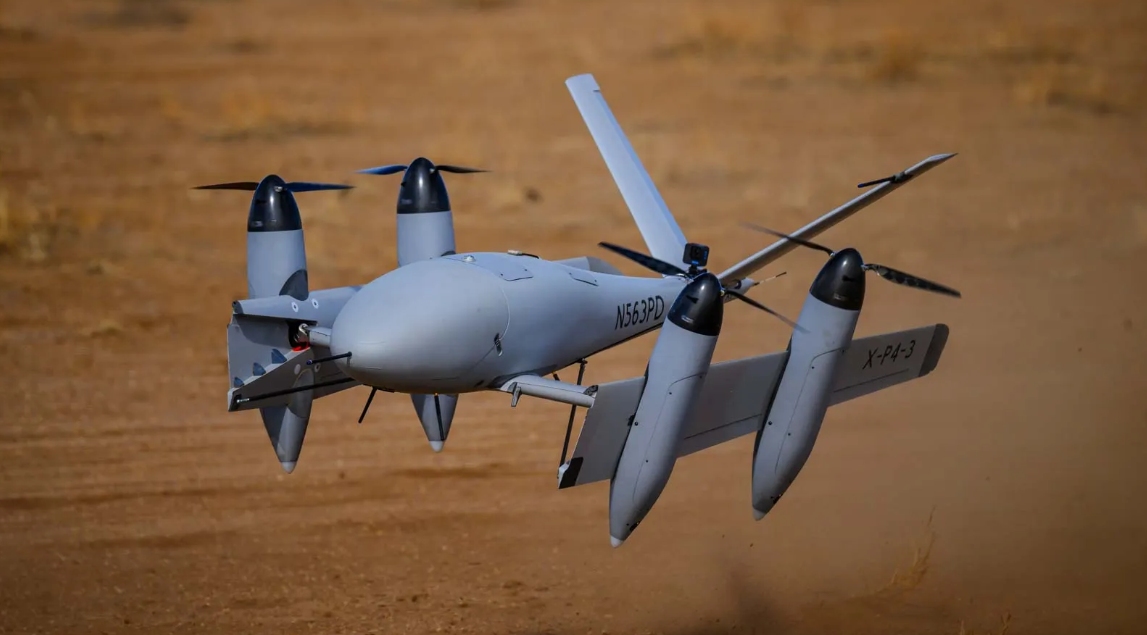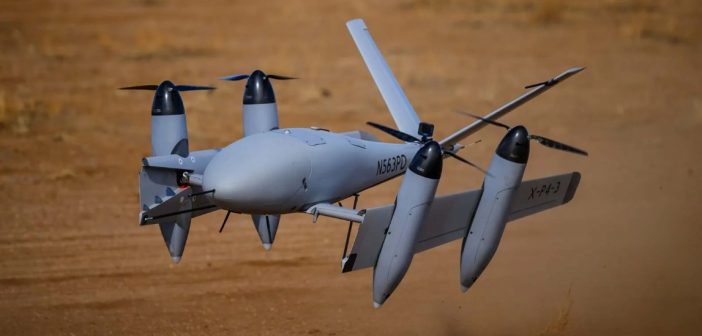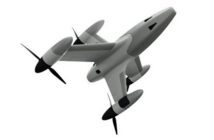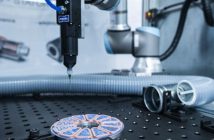
Vertical takeoff and landing (VTOL) company PteroDynamics will demonstrate its technology to the Royal Australian Navy early next month, the first time the company has shown off its wares in Australia.
“Our technology is reasonably well-known in the United States,” said PteroDynamics VP of Engineering Tim Whitehand at the Avalon Airshow 2025. “But it hasn’t made an appearance in Australia until now. Next week, we’re doing a demonstration for the Royal Australian Navy.”
“We want to get some traction in the Australian market, and this will help us do that,” he added.
PteroDynamics’ patented Transwing is an autonomous vertical takeoff and landing unmanned aerial system that can scoot along for 60 minutes at 185 kilometres per hour while carrying a 6.8-kilogram payload. Transwing is a new VTOL aircraft design. Its wings fold to transition between configurations optimised for vertical and winged horizontal flight.
With wings folded during VTOL flight, the aircraft becomes highly stable and gains significant gust tolerance. It unfolds its wings to transition quickly to wing-borne flight, remaining controllable through climbing, descending, and turning transitions. It requires no launch and recovery infrastructure and occupies one-third or less ground footprint than other VTOL aircraft with a comparable wingspan. PteroDynamics is conducting its Australian trial in conjunction with defence prime Babcock Australasia.
“Its folding wing design enables it to overcome tradeoffs between VTOL performance and range, speed, endurance, and payload capacity inherent in traditional VTOL designs, including tilt rotors, tail sitters, tilt wings, and lift-plus-cruise,” a PteroDyanamics spokesperson told Drastic News.
Despite Transwing’s unique engineering attributes, Whitehand says the company isn’t trying to build an “exquisitely complex flying machine.” He says customers want a high-quality robust product, but also some simplicity. Whitehand also said PteroDynamics focused on what it did best.
“We try to be excellent at a few things, specifically the design and technology,” he said. “However, the company works with third parties on elements such as power, electronics, and communications. “We have a small team working on what really matters and what differentiates us from the market.”
Whitehand also said breaking into new markets, including Australia, involved understanding the local industry, its requirements, and manufacturing specifications.
PteroDynamics’ current contract with the US Navy also allows it to market the P4 to private sector commercial customers.
The Royal Australian Navy did not respond to a request for comment.






